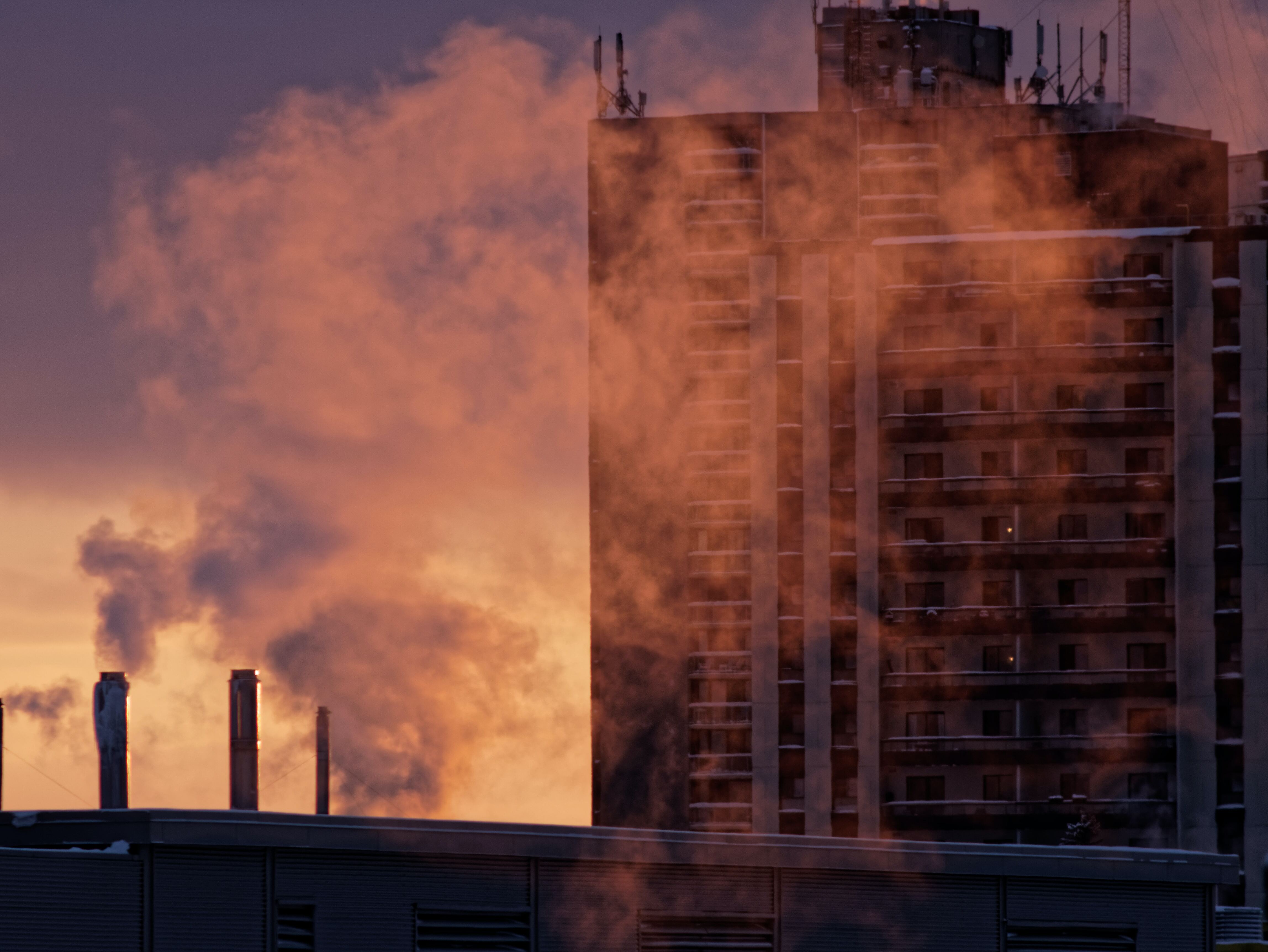6 typical questions about RTO
Regenerative Thermal Oxidizer (RTO) and activated carbon filtration are two advanced technologies employed in industrial processes to control air pollution and minimize the release of harmful pollutants into the atmosphere. These solutions play a crucial role in meeting environmental regulations and ensuring sustainable manufacturing practices.
How do regenerative thermal oxidizers work?
Thermal oxidation is an often-used technology to treat industrial air emissions and remove VOCs. The technology is based on thermal combustion which means that the exhaust gases are heated until theignition temperature is passed (which can be as high as 1100 °C) and the pollutants are ‘burned’. Under influence of the temperature, the VOCs are destroyed and decompose to CO2 and water. Often, natural gas is required to destroy
Regenerative systems differ from the standard non-regenerative thermal oxidation by using ceramic beds which transfer the heat of the purified gases to preheat the polluted flow. Due to this heat recuperation, less natural gas is needed to heat the polluted gas flow.


When are thermal oxidizers used?
Thermal oxidizers can be used for a wide variety of flow rates and concentrations. However, they are most efficient in high concentration ranges and are especially useful when they can run autothermal. To purify air emissions with low VOC emissions, a high amount of natural gas is needed which is not logical from both an economic and environmental perspective. Furthermore, thermal oxidizers tend to be used more to treat continuous flows as discontinuous operation regimes would mean that the thermal oxidizer has to be put on and off too frequently or natural gas is needed to keep the system running.
How does activated carbon compare to thermal oxidation?
Both activated carbon and thermal oxidation are often used technologies in air purification. Thermal oxidation tends to be used more for high concentrations and continuous emissions as this reduces gas consumption. Oxidizers are especially interesting when they can run autothermal. We do however often see situations in which thermal oxidation is chosen as the go-to technology without considering whether this is both economically and environmentally the best solution. But we feel this choice is worth questioning depending on the production setup.
Typically, activated carbon is less used in continuous processes with high concentrations as the carbon consumption can become too high. Activated carbon is ideally suited to remove organic pollutants in lower concentrations ranges and/or during discontinuous operations. When there is no pollution, there is simply no consumption. In such scenario, it makes perfect sense to evaluate activated carbon as opposed to thermal oxidation. There are however also situations in which activated carbon is used in combination with or as a temporary alternative to an RTO, as answered in the questions below.
What happens when an RTO needs maintenance?
During maintenance, the RTO cannot be used. As a result, there is no air purification system to remove the VOC emissions. Some companies are allowed to keep their production running even if there is no VOC removal system. However, other companies are obliged to shut down their production if they do not have an alternative solution to treat their air emissions. For large chemical or pharmaceutical companies, the cost of a production shutdown can be very expensive. In this situation, it can be beneficial to install a temporary solution to remove the VOCs so production can be kept running. Mobile activated carbon filtration is the ideal fit as a bridging solution during maintenance.
4 useful applications where activated carbon is used in combination with thermal oxidizers
There are several situations in which it is useful to have an alternative air purification system aside from the thermal oxidiser already on site. Activated carbon can be used as an additional treatment step or backup system in the following applications:
- As a temporary bridging solution
- During maintenance
- Bridging solution for the start-up phase or during lead-time of an installation
As explained in the previous question, a mobile activated carbon filter can be ideal as a temporary VOC purification system. Production on-site can continue as useful and no shutdown is required. In such situations, the mobile activated carbon filters are often taken up into the business maintenance plan of the plant and ordered well in advance. Once the maintenance is done, the filters are simply taken back.
- As emergency system after a calamity
When an unexpected shutdown or even a calamity of an RTO takes place, an emergency solution is needed to avoid a production stop. It can however be very challenging to find an effective air treatment system on short notice. As DESOTEC has a fleet of mobile filters, there are always filters available for emergencies. DESOTEC has already helped multiple customers throughout Europe in such an emergency. The activated carbon filters simply remain on-site to remove VOC emissions as long as needed.
- As permanent backup
- For (unexpected) shutdowns, malfunctions, …
- During exceedance of 25% of LEL levels
Some companies take a more proactive approach towards maintenance and calamities by installing a permanent backup system so VOC emissions can be purified at all times. This gives them the additional flexibility to also bypass the RTO when the VOC concentrations exceed 25% of the LEL levels which is a safety hazard for thermal oxidizers and use the activated carbon filter instead. Even when unexpected shutdowns do take place, the backup system is already in place and can simply take over VOC removal.
- As pre-treatment for thermal oxidizers
While thermal oxidation is a great technology to treat organic pollutants, it cannot remove everything. H2S or mercury for example cannot be removed via an RTO. In such situations pre-treatment is required as there are also emission limits in place. By using impregnated carbon, these inorganic molecules can be removed as well. In our experience, H2S removal is especially important as this results in odour nuisance in the area but also leads to SOx emissions which are regulated.
What is the CO2 impact of a thermal oxidiser? How does this compare to the CO2 impact of activated carbon?
When choosing a purification technology, companies are increasingly taking the CO2 impact of the technology into account. For larger multinationals, this tends to be influenced by their own corporate social responsibility actions. In some European member states, however, taxes on CO2 emissions also make technologies with a large CO2 impact less attractive.
The CO2 impact of a thermal oxidiser depends on each specific installation and flow that has to be purified. In general, we can divide the CO2 emissions from RTOs into two categories:
- CO2 emissions coming from burning the pollution (VOCs)
- Burning natural gas
- To keep the temperature in the RTO high enough
- To bridge times when less or no pollution is present
The first aspect still makes sense from an environmental perspective as many VOCs have a higher CO2 equivalent than CO2 itself. The second part, however, results in additional CO2 emissions from burning natural gas just to keep the installation running without having any return for this. Increasing gas prices and potential further expansion of CO2 taxes in European member states, is making this practice less attractive as it is not sustainable in the longer term.
Also, activated carbon has its own CO2 impact. There is however a large difference between using fresh or virgin activated carbon and reactivated carbon. Generally, the CO2 impact of reactivated carbon is only 10% or 20% of that of fresh activated carbon. For fresh carbon, the CO2 footprint typically lies between 6,5 and 12 kg CO2/kg activated carbon. That of reactivated products is only ca. 1,2 kg CO2/kg activated carbon.
One of our customers in Spain used an RTO to treat their VOCs in the past. The natural gas required for their RTO accounted for 25% of the company’s total gas consumption. By switching to an activated carbon system, additional natural gas was no longer required. Due to this change, they could significantly reduce their CO2 footprint.
How can DESOTEC help you?
To discuss how DESOTEC can help remove pollutants from your plant’s air emissions, contact the team today.
Contact our expertsHow can DESOTEC help you?
To discuss how DESOTEC can help remove pollutants from your plant’s air emissions, contact the team today.
Contact our experts-
Water & liquid purification
Our mobile filtration solutions purify wastewater and groundwater, and ensure process liquids reach high purity standards. -
Our unique service
Our closed-loop, full-service model is as unique as your business needs. We’ll define the right filtration setup and safely recycle filtration waste, making it easy to go green. -
Your sustainability journey
We care about protecting our air, water and soil for future generations, just like you. Our filtration solutions help you meet environmental standards, reducing your carbon footprint.


